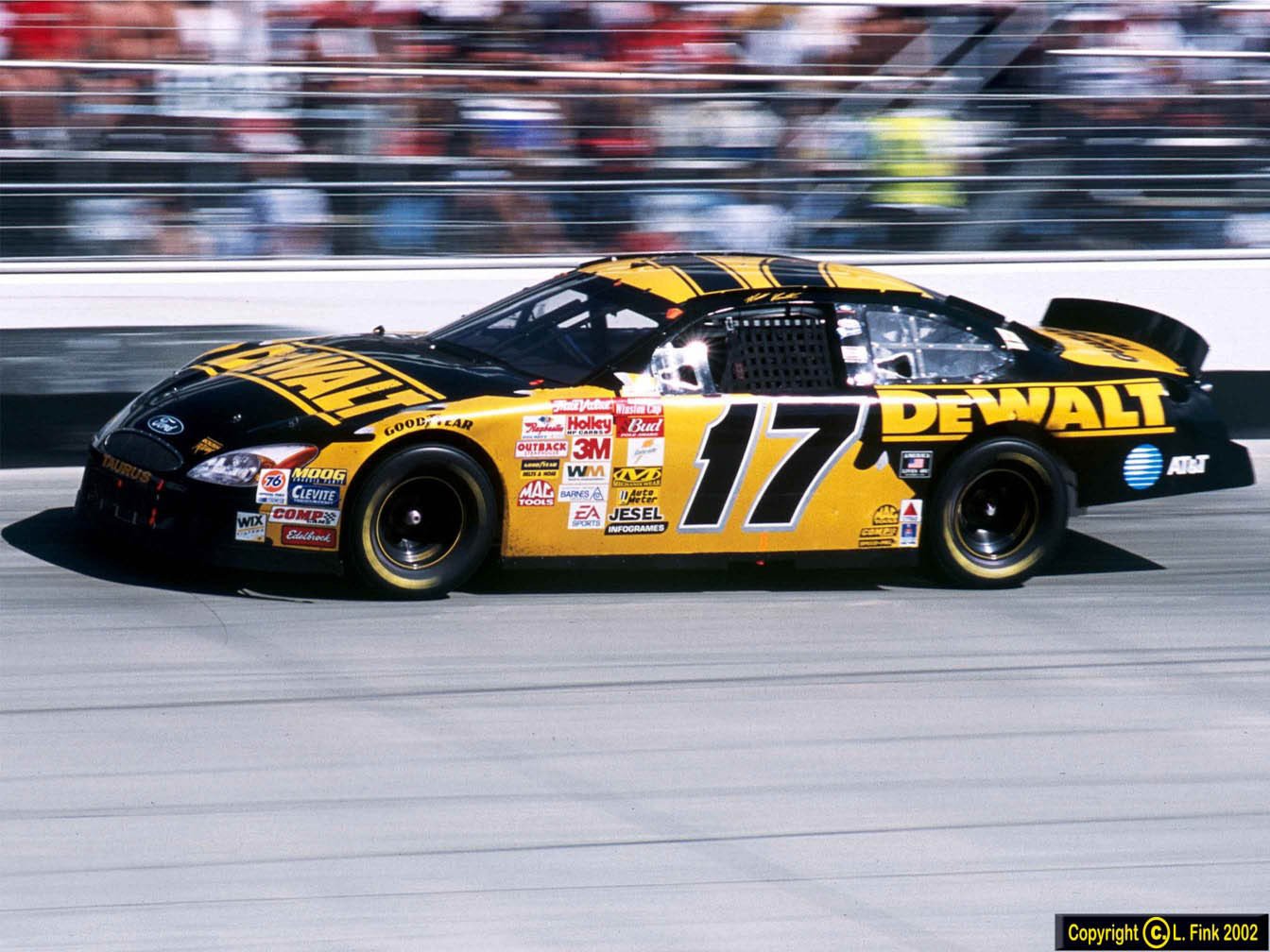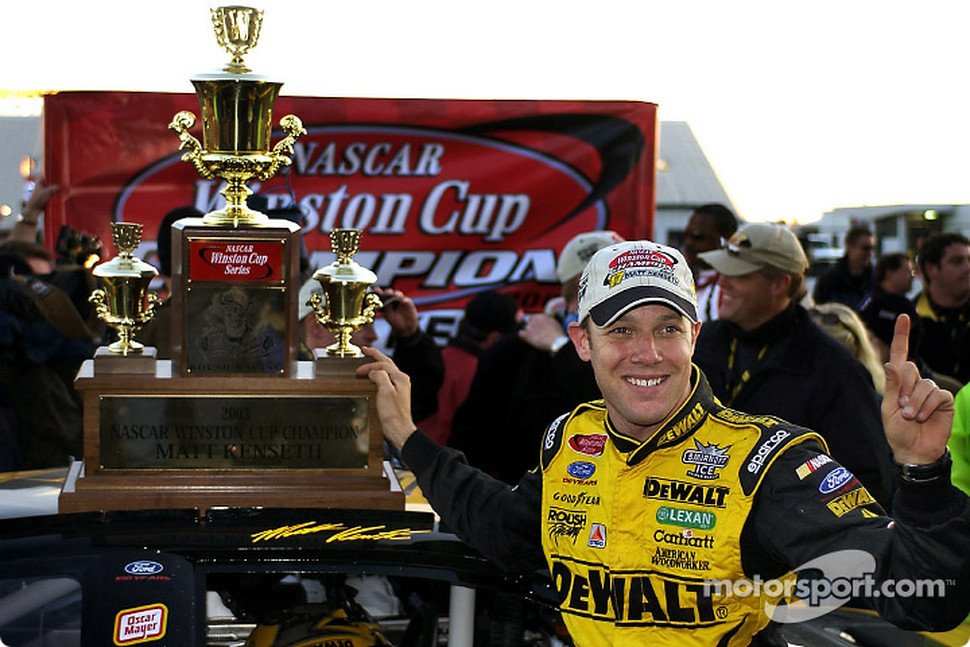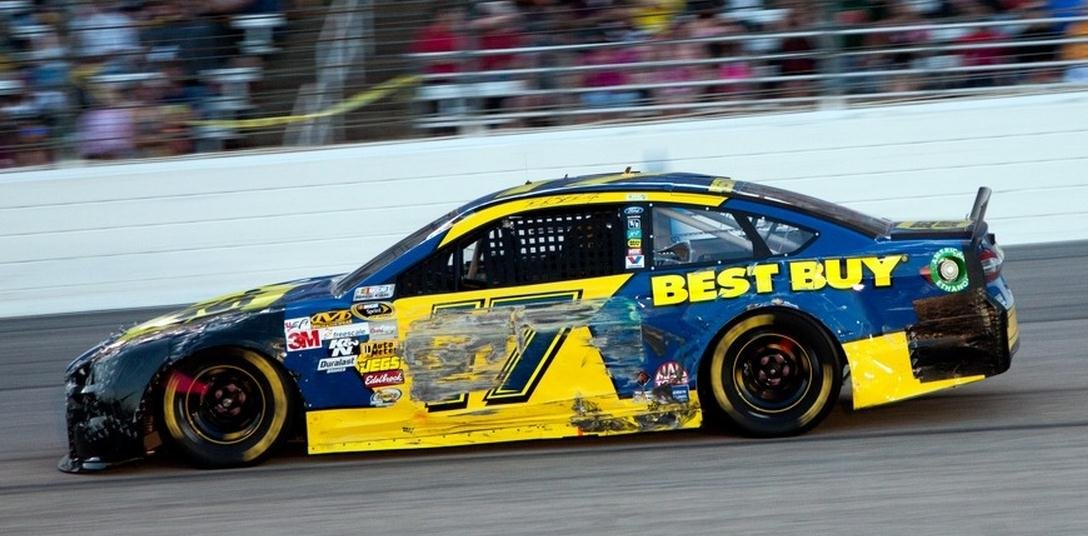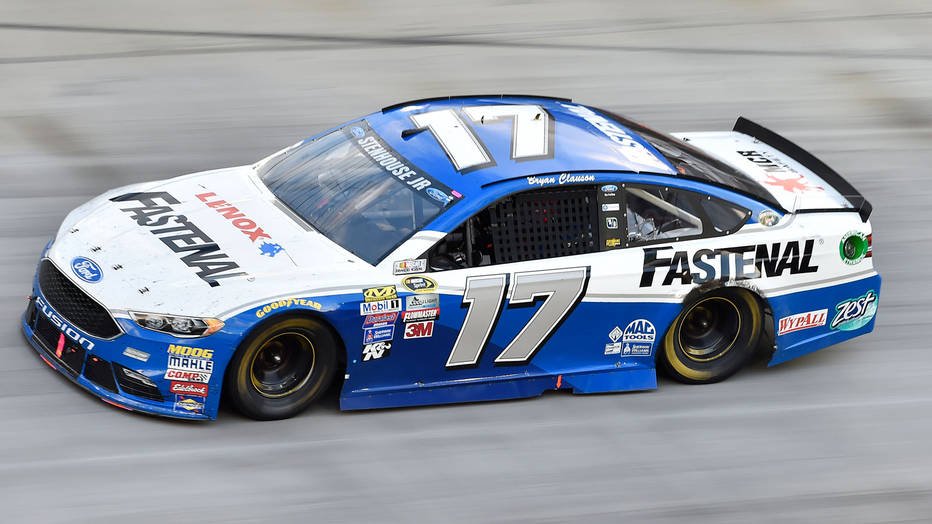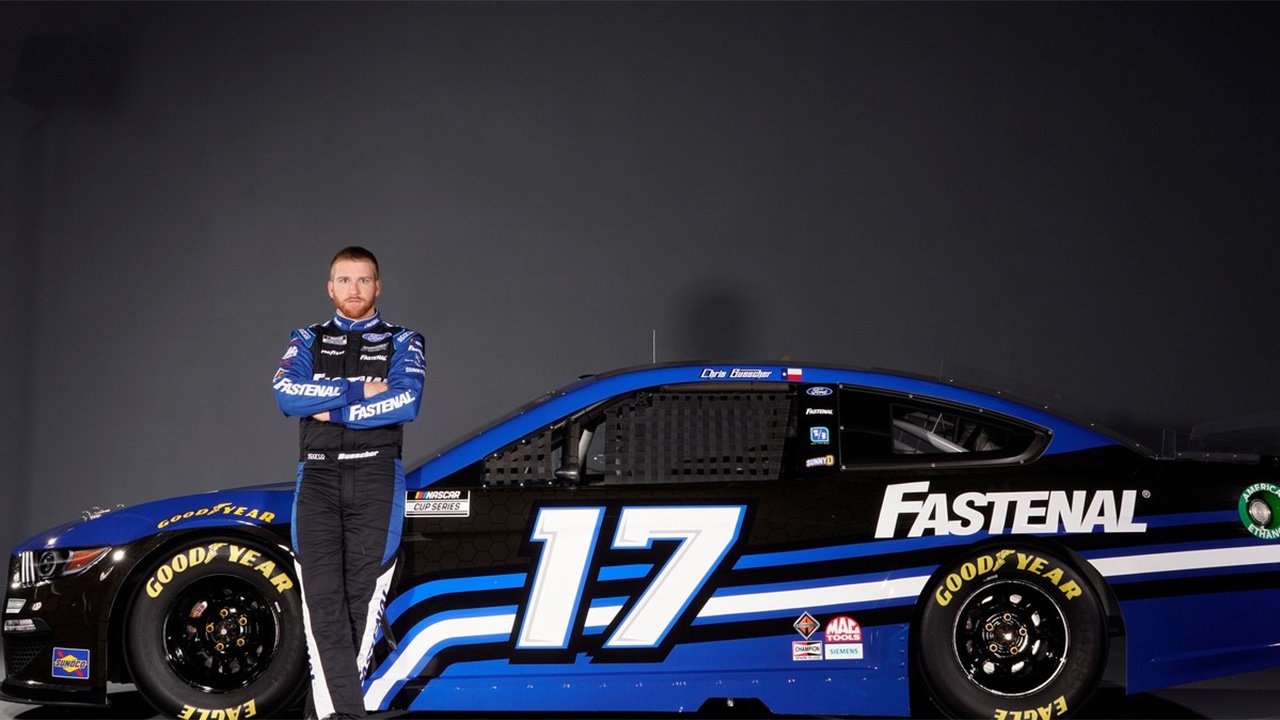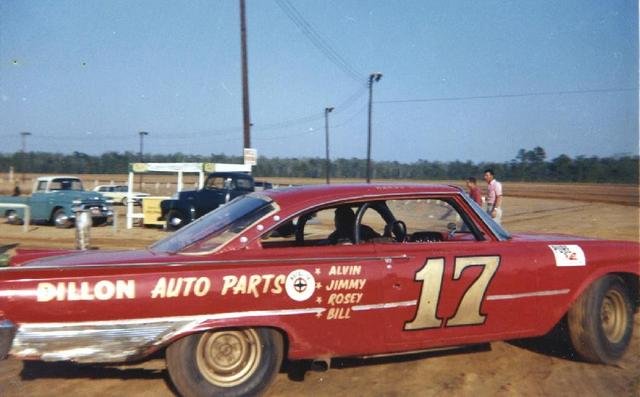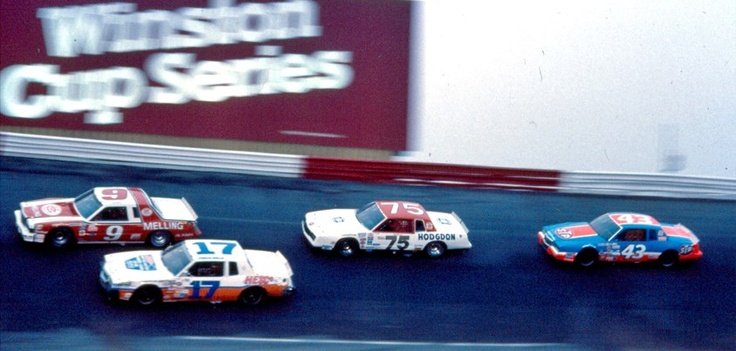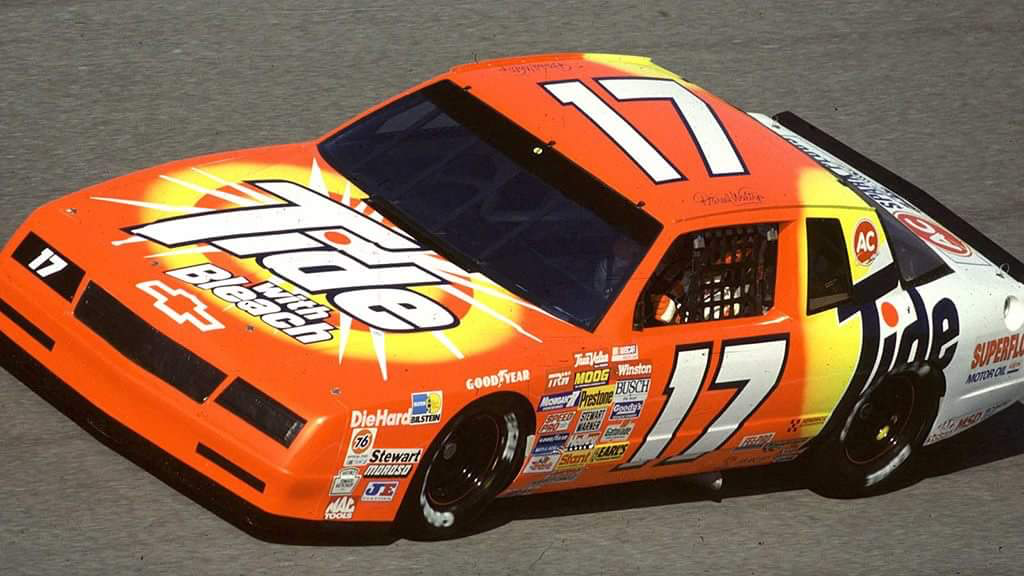
In NASCAR Cup Series competition the #17 car has started 1,878 races and has 75 wins, 49 poles, 355 top 5s, and 639 top 10s.
Matt Kenseth has the most starts in #17 with 471 from 1999-2012 including 24 wins and 1 Championship. In the beginning, DeWalt Tools was the sponsor, and Robbie Reiser served as crew chief. This was the same combination as was run on Reiser’s own Busch Grand National (XFINITY) team. Premiering at the summer Michigan race in 1999 , Kenseth finished 14th. A fourth place finish one month later at Dover proved Kenseth was ready for Cup.
In 2000, Kenseth and the #17 started every race, won the Coca-Cola 600 , and defeated favorite Dale Earnhardt, Jr. for Rookie of the Year honors. The 2001 season saw Kenseth finish thirteenth in points, winless and with only 9 top ten finishes. However, the team saw marked improvement the next year, as Kenseth won five times in 2002, ultimately reaching an eighth place finish in points.
While winning only once in 2003, at Las Vegas Motor Speedway, Kenseth performed remarkably consistent to win the final Winston Cup Championship by 90 points, earning Jack Roush his first Cup championship. Some say that Kenseth winning the championship with only a single win and leading the points standings for 33 consecutive weeks is the reason NASCAR switched to the new Chase for the Cup points format.
The team continued to perform in 2004, winning two races, making the Chase for the Nextel Cup, and finishing eighth in points. In 2005, Kenseth finished seventh in points after experiencing a disappointing beginning to the season. However, the second half of the year brought a resurgence of success for the car, as a win at Bristol Motor Speedway helped the team make its second consecutive Chase for the Nextel Cup. In 2006, Kenseth won 4 events, and finished second to Jimmie Johnson in the championship standings. Kenseth won the first two races of the 2009 season winning Jack Roush his first Daytona 500 . Due to the slumping economy, however, Kenseth’s longtime sponsor DeWalt informed Roush Fenway Racing on July 23, 2009 that they would no longer be sponsoring the #17 team for the 2010 season. Crown Royal announced they would move to the #17 in 2010 for 35 races asValvoline sponsored the remaining 3. For 2011, Kenseth returned to victory lane atTexas , Dover and Charlotte. However, Crown Royal announced that they would not return to the #17 team, instead focusing their NASCAR efforts on the Brickyard 400 sponsorship. Despite this, Kenseth finished fourth in points.
In 2012, Kenseth’s primary sponsorship was split between Best Buy , Zest Soap , and Fifth Third Bank , although the team was still forced to run several racesunsponsored . Kenseth started the year strong by winning the Gatorade Duel Qualifying Race and the Daytona 500, which was also Jack Roush’s 300th victory in NASCAR and his second Daytona 500 victory. It was later announced that Kenseth was leaving Roush Fenway Racing after the season, even though he had no team he was going to. Everyone was wondering how Kenseth would perform after revealing the news. Kenseth made the Chase and won two of the 10 Chase races (Talladega and Kansas). Kenseth finished seventh in the standings. It was then announced that Kenseth would be driving for Joe Gibbs Racing in 2013.
In 2013, Kenseth was replaced by rookie Ricky Stenhouse, Jr. Stenhouse inherited Kenseth’s sponsorship, while adding primary support from Nationwide Insurance to cover the unfilled races. Stenhouse had shown promise, as he finished 12th at the Daytona 500. Through the first 17 points races, his highest finish had been 11th. He also finished second in the Sprint Showdown. Stenhouse’s best finish of the entire season was a third place finish at Talladega in October.
In 2014, the team’s Best Buy sponorship was replaced by Cargill , while keeping Zest, Fifth-Third and Nationwide. Stenhouse struggled along with the rest of the Roush program. Stenhouse spend a majority of the summer working with new crew chief Mike Kelley trying to improve the chemistry of the team. The #17 suffered through a dismal season, with Stenhouse recording two top-10s, while failing to qualify for the Fall Talldega race due to an unfortunate flaw in the new qualifying format that left them on the outside. The team finished 28th in owner points. After a slow start in 2015, Stenhouse nearly won the Food City 500 where he came home in 4th. After a weak summer, he had a consistent runs of 15th or better in 6 of the last 10 races, including two top 10’s at Dover and Talladega. After poor performances at Martinsville and Phoenix where he was as high as 22nd in the points, he fell down to 25th at season’s ending.
On August 21, 2016, Stenhouse recorded a 2nd-place finish in the Bass Pro Shops NRA Night Race at Bristol Motor Speedway driving a car bearing the paint scheme his late friend Bryan Clauson once drove.
At Talladega’s 2017 GEICO 500, Stenhouse won his second career Cup Series pole and his first since the 2013 Cup Series season. Stenhouse led the opening laps and then stayed mid-pack for the rest of the race. After Stenhouse avoided an 18-car pileup he found himself in second place chasing Kyle Busch. After the final restart, Stenhouse passed Busch on the final lap for the win. It was his first Cup Series win, while RFR snapped its 101-race winless drought, dating back to Carl Edwards’ victory in the 2014 Toyota/Save Mart 350 at Sonoma Raceway.
In the Playoffs, at Chicago he had a rough showing with a not so strong car and committment line penalty which he ended up in 25th. In the next race at New Hampshire he hit the wall on Lap 3 but recovered to finish 15th on the lead lap to tie Austin Dillon on points for the last spot. At Dover in the elimination race, he struggled early starting in 14th, falling back to 23th and off the lead lap but took a risk of staying on the lead lap and getting a caution while in third place and finished 4th in Stage 1 getting 7 Stage Points. He would not earn any Stage Points in Stage 2, but finished 19th while Ryan Newman finished 13th which proved enough for Stenhouse Jr. as he finished above Newman by 2 points for the last playoff spot in the Round of 12 and advanced to the second round of the playoffs. Stenhouse was eliminated in the second round after failing to perform well enough in the races.
2018 started with decent results for Stenhouse, as he had consistent runs throughout the season. However at Daytona, Stenhouse was mainly to blame for 2 accidents, and he was caught up in 3 crashes, ultimately finishing 17th, after winning the first two stages, and receiving a security escort after the race. He dropped to 18th in the final point standings as he failed to visit victory lane, missed the playoffs, and recorded only five top-ten finishes.
On August 1, 2019, Stenhouse announced he signed a contract extension with Roush Fenway Racing through 2021. However, on September 25, Roush Fenway Racing announced that Stenhouse will be replaced by Chris Buescher in 2020, with Roush using an option in their contract with Buescher. In the aftermath of the sudden dismissal from the team, which was criticized by some members of the racing community (Including Kevin Harvick), Roush president Steve Newmark, said that, after ten years with the team, the relationship with Stenhouse had “run its course.” Stenhouse would eventually be hired by Buescher’s old team of JTG Daugherty Racing to pilot car #47 for 2020. Stenhouse started car #17 251 times with 2 wins.
In 2020 Chris Buescher returned to Roush Fenway Racing to take over the #17 car. Buescher started off the season with a 3rd place finish in the 2020 Daytona 500. Buescher struggled initially when returning from the COVID pandemic, but scored a Top 10 in the 2020 Coca-Cola 600. Through the latter half of the regular season, Buescher scored 4 more Top 10s, including a 5th place at the inaugural Daytona Road Course race. Buescher would finish the season 21st in points, with a career-high 8 Top 10’s. Buescher returned in 2021 with a season best finish of 3rd at the Charlotte Roval and a total of 8 top 10 finishes.
In 2022 returned to the newly rebranded “Roush Fenway Keselowski Racing”team. Buescher scored 3 top 10s in the first 15 races of the season before he was sidelined at Gateway with COVID symptoms. For one race, he was replaced by Zane Smith, who finished 17th. The following race at Sonoma, Buescher returned to score a 2nd place finish. He scored 3 additional top 10s, including a 3rd place win at Richmond before scoring at upset win at the Bristol Night Race, the 2nd win of his Cup career.
2023 was a career year for Buescher, as he scored 3 regular season wins including back-to-back victories at Richmond & Michigan, in addition to the regular season finale at Daytona. Buescher was eliminated from the Playoffs following the Round of 8, and he finished a career high 7th in the standings. Buescher has 143 starts in #17 with 4 wins. He will return in 2024.
Darrell Waltrip drove #17 for 344 races and 15 wins with 2 different teams between 1987-1998. The No. 17 car at Hendrick Motorsports came about when Darrell Waltrip left Junior Johnson’s team following the 1986 season. Waltrip chose to join Hendrick Motorsports with Tide (brand) as his sponsor and 17 as his car number. Waltrip finally won the Daytona 500 in 1989, a race that had eluded him for so many years.
At the end of the 1990 season, Waltrip decided he wanted to start his own team, so he left, taking the No. 17 with him. The Tide sponsorship moved to the flagship No. 5 team with Ricky Rudd as the driver and remained there until the end of the 1993 season. Waltrip won 9 races with Hendrick. Waltrip formed his own team to field cars in the 1991 Cup season. He would continue his relationship with Chevrolet and drive a Chevrolet Lumina with Western Auto as the primary team sponsor.
Waltrip hired long-time friend and crew chief, Jeff Hammond, to oversee the building of race cars and to continue as crew chief. Waltrip and Hammond enjoyed much success together as Hammond had been with Waltrip during the championship winning years with Junior Johnson, and most of the Hendrick Motorsports years. In the 1991 season, Waltrip visited victory lane twice, his first win in his second stint as owner/driver coming in only the 7th race of the season on April 21, 1991, in the First Union 400, at North Wilkesboro Speedway in North Wilkesboro, North Carolina. His second win of the year came at Pocono Raceway. Just two races after celebrating his second win of 1991, Waltrip would again be involved in a serious crash , at Daytona.
Waltrip would compete in the following race, the summer race at the Pocono, but was crashed again when Ernie Irvan spun driver Hut Stricklin, in front of almost the entire field. In 1992, Waltrip collected three more wins, including the Mountain Dew Southern 500 at Darlington. That would be Waltrip’s 84th, and final NASCAR career victory, tying him with Bobby Allison for what was then third on the all-time list. Both he and Allison have since been passed by Jeff Gordon.
At the 1997 UAW-GM Quality 500, Waltrip failed to qualify for the first time in over 20 years as Terry Labonte also failed to make the race. Because Labonte was a more recent Cup champion, he was able to take the past champion’s provisional. After the season, Waltrip and his team were struggling to find sponsors, but were able to put together a last-minute deal with the Speedblock for 1998. Speedblock only paid portions of what was promised, and the deal was canceled. Waltrip’s team at this point was nearly insolvent, and he sold the team to Tim Beverly.
From 1967-1971 David Pearson drove the #17 Holman Moody car in 140 races earning 30 wins and 2 Championships. After a part time season in 1967, Pearson drove the #17 Ford Torino to 16 victories on his way to the 1968 Grand National (Sprint Cup) Championship. Pearson won his third and final championship in his final season running the full schedule in 1969. After running part time for 1970, Holman Moody and Pearson split near the middle of the 1971 season after Pearson refused to take a 10% pay cut.
Fred Harb drove #17 from 1957-1963 in 110 of his 144 career races. Harb never had the resources to win an event or run full season. His most active year came in 1958, when he raced in half the races and finished 24th in points), but still earned 42 top-tens in his career. His best finish overall came in 1963, when Harb was runner up at a race at Bowman-Gray Stadium. After earning a 6th place finish at Bowman-Gray in late 1965, Harb retired from further NASCAR competition.
Rodger Hamby started 67 of his 68 career starts in #17 from 1977-1981. Hamby’s career was spent as a driver-owner in the #17 Chevrolet machine. One of his vehicles was involved in a major crash in the 1979 Gabriel 400 where Steve Pfeiffer (replacing Hamby during the race in the #17 Chevrolet Impala) injured some spectators after a routine green flag pit stop went awry. As Hamby started the vehicle and made the substitution during the middle of the race, he got credit for the finish, not Pfeiffer.
Lake Speed drove Hamby’s #17 in 32 races, most of which came in 1982. 1982 was Speed’s first full year of competition on the Winston Cup circuit.
Sterling Marlin drove the Hamby #17 in 1983 for 30 races.
Sterling Marlin drove the Hamby #17 in 1983 for 30 races.
Other notable drivers in #17:
Phil Parsons, 16 starts
Tommy Houston, 7 starts
Lennie Pond , 7 starts
Morgan Shepherd, 6 starts
Bill Elliott, 5 starts
Glenn Jarrett, 4 starts
Greg Sacks, 3 starts

